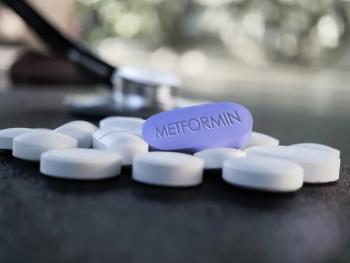
In vitro fertilization for patients with and without COVID-19 vaccination
A research letter published in JAMA Network Open has found no difference in clinical outcomes for in vitro fertilization (IVF) via intracytoplasmic sperm injection (ICSI) between COVID-19 vaccinated and unvaccinated women of reproductive age.
“Our study was inspired by a need for foundational literature on the topic of COVID-19 vaccination and fertility,” said principal investigator Emily Jacobs, MD, a first-year reproductive endocrinology and infertility fellow physician at the University of Iowa in Iowa City. “Around the time of the rise of the delta variant, infertility patients were still hesitant about COVID-19 vaccination because of concerns for the potential impact on fertility, despite some previously published literature that disputed such claims.”
Jacobs noted that previous studies on the topic were limited to examining frozen embryo transfer cycles and IVF cycles with frequent use of ICSI for insemination, both of which are conditions that do not occur in in vivo conception.
The retrospective cohort study, which was conducted at the University of Iowa, consisted of 142 vaccinated patients and 138 unvaccinated patients, all of whom underwent IVF-fresh embryo transfer cycles between December 2020 and September 2021. Most patients were young, nulliparous and overweight.
In the vaccinated group, 89.7% were fully vaccinated and 10.6% partially vaccinated. The mean time from last vaccination to oocyte retrieval was 93 days.
There was no difference in mean ovarian reserve antral follicle count between the two groups: 23 for the vaccinated vs. 24 for the unvaccinated (P = 0.42).
The mean ovarian response days of gonadotropin stimulation were also comparable: 9.8 vs. 9.6, respectively.
In addition, the mean number of oocytes retrieved were similar: 14 vs. 15, respectively.
The mean number of useable embryos produced by the two groups was also equivalent: both 4.
However, vaccinated patients achieved significantly higher mean fertilization rates than unvaccinated patients: 77.45% vs. 68.66%, respectively (P = 0.03).
But after accounting for age and body mass index (BMI), there were no significant differences in the ongoing clinical pregnancy rate and the miscarriage rate between the two groups.
There was also no difference in these two outcomes for standard insemination-only cycles.
“Although it is well known that vaccinations in general promote a nonspecific immune response, there is no known strong biologic plausibility that COVID-19 vaccination impairs female fertility,” Jacobs told Contemporary OB/GYN. “Thus, we were not surprised to find that there was no aspect of reproduction -- oocyte yield, embryo development, clinical pregnancy -- that was impaired in those who had COVID-19 vaccination compared to those that were unvaccinated.”
Despite better fertilization rates in COVID-19 vaccinated patients, “we cannot draw conclusions on this finding, given our study was not powered to detect a difference in this outcome,” Dr. Jacobs said. “Still, the finding reinforces that there is no determinantal effect of COVID-19 vaccination on female fertility.”
Study results can be used to reassure both the fertile and infertile population that COVID-19 vaccination does not negatively impact any aspect of reproduction, according to Dr. Jacobs.
“The ultimate outcome for any IVF study is live birth rates, which we plan on sharing in the coming months,” she said.
Reference
- Jacobs E, Summers K, Sparks A, et al. Fresh embryo transfer cycle characteristics and outcomes following in vitro fertilization via intracytoplasmic sperm injection among patients with and without COVID-19 vaccination. JAMA Netw Open. Published online April 22, 2022. doi:10.1001/jamanetworkopen.2022.8625
Newsletter
Get the latest clinical updates, case studies, and expert commentary in obstetric and gynecologic care. Sign up now to stay informed.










